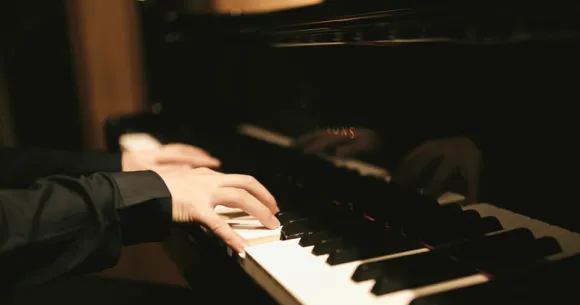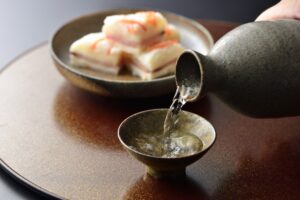
It really is all in the wrists.
In music, there is the concept of timbre, which is the quality that makes notes have a different “tone color” or emotion to them, even if sung or played in the exact same way. It’s that essence you can hear when instruments of very different quality are handled by the same player or when a song can seem to take on a completely different feeling even with no changes were made to the volume, speed, or key.
▼ A quick example of changing timbre
Manipulating timbre requires very delicate alterations in how a sound is produced. You could argue that singers tend to have the best control over timbre through various manipulations of their own bodies in combination with their natural raw voices. String instruments like violins can also demonstrate a great range in timbre in skilled hands due to their sensitivity.
In other words, the more “in touch” we are with the sound production of the instrument, the more control we can have over timbre. So, where does that leave pianos?
With a piano, we essentially press a key and then the mechanisms inside the instrument do the rest of the work. Of course, you can press the key harder to make it louder and so on, but those techniques alter the sound in ways that are considered separate from pure timbre.
Despite this, for decades, music fans have sworn that pianists have the ability to manipulate a piano’s timbre simply in the way they interact with the keys, while others argue it’s only an auditory illusion, a misunderstanding of what “tone” is, or influenced by other external factors like acoustics or incidental sounds, and thus technically impossible. Here’s a few comments I picked up online regarding the debate.
“Hammers can vibrate as they fly. That might affect the sound, but they vibrate fast enough (25Hz) that it would be implausible to be able to control the effect, especially on different pianos.”
“You cannot with keys alone. There is only one variable which dictates the sound emitted from the strings: velocity of the hammer. A technician can modify the hammers to change the timbre.”
“Played classically for 12 years. As far as I can tell ‘tone’ is really a combination of dynamics, phrasing, articulation, and pedaling. This seems all the more clear considering how the action works – the hammer is literally disconnected from the key when it hits the string. “
“On piano, the only thing that matters is how fast you press the key. That is the only thing that will change how THAT key will sound.”
“Most pianists’ impression of tone is a two-factor relationship of volume × time and how it works within a phrase of notes. The reason why it gets interpreted as tone is because that is easier to describe and quantify for a lot of musicians.”
Now, though, a team of researchers with NeuroPiano and Sony Computer Science Laboratories has determined that a skilled pianist can make a song sound different while playing the same music on the same piano with no alterations except for how they manipulate the keys.
First, they asked 20 internationally renowned pianists to perform a piece of music in a variety of timbres, such as “light and heavy” or “bright and dark.” Although a subsequent survey of 40 musicians and non-musicians revealed it was possible for everyone to detect the tone of these pieces accurately, the techniques to do so were so subtle that it was impossible to quantify exactly how it was done until now.
As the top pianists played, the state-of-the-art, non-contact Hackkey system monitored the movements of all 88 keys at a rate of 1,000 frames per second, mapping the keys to 0.01 millimeter and one millisecond accuracy.
They found that the changes in perceived timbre were linked to three specific changes in the movement of the keys. The first one is a little tricky to visualize, but first, we need to understand “escapement,” which is the point when the hammer corresponding to a pressed key is sent flying upward into the string to produce a sound.
▼ This diagram shows the mechanics of a piano key and the placement of the Hackkey sensor (in green).
The researchers found that the acceleration of the key press up until escapement occurs dictated the tonal quality of the sound. Remember this is neither related to speed or power alone, as those will affect other aspects of the sound.
You might compare it to swinging a bat versus a whip. You can conceivably hit the target in the same amount of time and with the same amount of force, but the way each weapon accelerates as it approaches the target will be very different. This is true with a piano key as well, in that by hitting it with a steady, uniform pace like a baseball bat or gradually building up speed like a whip will produce a note at the same volume but have a different timbre.
Another factor controlling timber is much simpler in theory but extremely difficult in execution. Very minute asynchronicities between fingers and hands can also affect the tone color of the note. Since everyone probably has innate asynchronicities on that level to some degree, it could help explain how different players can have different timbres from each other in general, but to be able to control this phenomenon at will would take an incredibly skilled set of hands.
The third factor is simply the initial speed at which the key moves. Combining all three, the team were able to map out exactly how different tones can be created on a piano.
In this graph, the “overlap” axis shows how far different notes played by different fingers or hands either overlap, with a positive value in milliseconds, or are separated, with a negative value in milliseconds. The acc-escapement is the acceleration the key is undergoing at the moment the hammer is released, and the onset-noise is the initial speed of the key. The combination of these three values will make the hammer escape in a very slightly different way and create a sound in the corresponding timbre zone.
Not only does this mean that the age-old debate over whether timbre can be created on a piano through its keys has been solved, but we now know exactly how it’s done. This means it can even be potentially developed and taught to others, though my teacher, Mrs. Makino up the street, might have her work cut out for her.
By the way, this research was carried out as a part of the Japanese government’s Moonshot Research and Development Program, which aims to free humanity from physical, mental, temporal, and spatial restraints by 2050. I’m not exactly sure how this fits into all that, but it’s pretty neat and good to see the work is being done on it.
Source: PR Times, Reddit 1, 2, 3
Top image: Pakutaso
Insert images: PR Times
● Want to hear about SoraNews24’s latest articles as soon as they’re published? Follow us on Facebook and Twitter!
Like this:
Like Loading…





